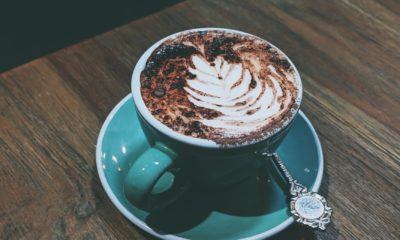Business
What we should talk about when we talk about selling liquor bottles
Indeed, there is a gamut of price indicators used by experts in determining liquor’s price. However, at the end of the day, it depends on who is selling it.

Liquor bottles, chiefly the antiquated ones, are overpowering pieces: they evoke sophistication and grandeur, let alone wealth and fortune.
Perhaps, this is the most disappointing misconception about liquors. That if imprinted on its label is a foreign language and long-gone date then it is automatically posh and expensive, and if it is locally distilled then it is without a doubt cheap and worthless. Some people, even those who herald themselves as wine enthusiasts, would reserve special affection for French wines simply because they’re French and give little to American ones, for the simple reason of it being American.
Popular notion did it. Or maybe we could blame it on Hollywood films or on Lost Generation’s flamboyant, glitzy novels in which characters offer grandiose soliloquy to a whiskey bottle, where people would abandon whatever they’re up to when a wine has made its entrance in the scene, where dimly lit liquor cellars are place built solely for amorous trysts.
There’s a tinge of reality in here, though. Vodka, gin, brandy whiskey, rum, or any distilled liquor for that matter, appreciates in value as it ages, although, unlike wine, their ageing stops once they are sealed inside the bottle. But there are no specific rules for this, as every distilled spirit has a minimum age requirement before it could reach a bottle and be eligible for sale. Whiskey has to be aged at least eight years before it can be tagged as ‘real whiskey,’ whilst rum requires only a relatively shorter period of time to become rum, which is eight months.
The bottle and what’s inside it have their own respective values. The value of the bottle alone depends on what the auction industry called as twelve basic factors such as age, rarity, supply and demand, condition, color, locale, aesthetic appeal, embossing and design, category, size, individuality, and historic significance. And if you’re going to talk about selling liquor then it goes a bit technical, because it takes an expert opinion to verify the age of the liquor inside it, its quality, and its overall authenticity.
Indeed, there is a gamut of price indicators used by experts in determining liquor’s price. However, at the end of the day, it depends on who is selling it. Auction houses have their own set of undisclosed pricing methods, and even independent sellers have the prerogative over pricing his/her own possession. In this regard, the question lies on who’s going to take it. One can sell a thirty-year-old wine bottle for $50,000, and it’s all up to him if he can make people buy it. Moreover, the buyer’s predilection plays a part, too. Some are overly concerned if the liquor inside is potable, some just couldn’t care less. Some gauge its value by its individuality, say, if it is signed by the great alcohol-lover himself Ernest Hemingway or if it’s found inside a burnt aristocratic house or some stately home cellar, and some would just look at its age.
So how about craft liquors? Are Eastside Distilling, Inc. (OTCQB: ESDI) and Maine Craft Distilling’s products eligible for auction? Well, never underestimate them. Remember that Kentucky’s newest whiskey maker has successfully sold a bourbon bottle for $28,050 in 2014. It is now, according to experts, one of the most expensive bourbon bottles ever sold.
Lesson learned here? You can’t judge a liquor bottle by its age alone. Or if it has French or Spanish or Latin on its label. Moreover, always remember that there are hundreds of frauds out there, so if you’re not sure with what you’re buying then it’s always safer to ask for an expert’s assistance.
—
This article may include forward-looking statements. These forward-looking statements generally are identified by the words “believe,” “project,” “estimate,” “become,” “plan,” “will,” and similar expressions. These forward-looking statements involve known and unknown risks as well as uncertainties, including those discussed in the following cautionary statements and elsewhere in this article and on this site. Although the Company may believe that its expectations are based on reasonable assumptions, the actual results that the Company may achieve may differ materially from any forward-looking statements, which reflect the opinions of the management of the Company only as of the date hereof. Additionally, please make sure to read these important disclosures.

-

 Markets4 days ago
Markets4 days agoSugar Markets Cautious Amid Surplus Outlook and Steady Demand
-

 Crypto2 weeks ago
Crypto2 weeks agoHyperliquid Proposes Burning $1B in HYPE to Make Supply Deflationary
-

 Crypto2 weeks ago
Crypto2 weeks agoRipple in 2025: Legal Victory, RLUSD Growth, and XRP’s Uncertain Future
-

 Crowdfunding4 days ago
Crowdfunding4 days agoCrowdfunding Grants Open for Business Projects Until January 2026

























